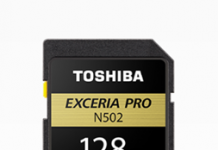|
|
Review: TDK |
TDK was kind enough to send us a pair of
high fidelity wireless headphones for review. These headphones feature
transmission technology developed by Kleer, which is an uncompressed CD quality
16bit 44kHz digital connection, giving improved sound quality over analogue
transmission. This also eliminates the sound quality degradation from lossy
audio compression that Bluetooth and some other digital wireless headphones
suffer from. The headphones include a transmitter just a little larger than a
9V battery which plugs into the headphone socket. Both the transmitter and
headphones run on readily available AAA batteries.
In this review, we will check out how they
perform against a pair of corded headphones, its features and how well it copes
with everyday use such as sound quality, line of sight, distance from transmitter
and battery life.
Company Information
TDK was founded in Japan in 1934 and
started off as a manufacturer of iron-based magnetic material ferrite, the
recording material used in audio cassettes. In 1952 they started to
manufacture magnetic tapes, followed by the more common compact cassette tapes
in 1966.
Over the years they manufactured video
tapes and blank recordable CD and DVD media and in more recent years, Blu-ray
recordable media. Towards the end of 2007, Imation bought TDK's recording business,
which covers storage such as flash drives, optical storage, magnetic tapes and
accessories, with its products bearing the "TDK Life on Record"
logo.
If you would like to find out more about
TDK, please visit their website.
Product Specifications
We obtained the following specifications
from the packaging:
Non-compressed Stereo Sound - Preserves original 16-bit 44 kHz-digital audio CD signal
quality. Kleer does not compress the audio prior to transmission resulting in
uncompromised quality.
Dynamic Channel Selection Minimizes
Audio “Drops” - Audio streams in the robust 2.4 GHz
ISM band. Dynamic channel selection allows the transmitter to monitor
interference and switch to another channel if necessary.
10 Meter/33 Feet
Transmitter-to-Headphones Range
Ultra-low Power Consumption - 2 AAA Batteries provide 30 to 40 hours of listening time.
Includes: Wireless
headphones, 2.4 GHz transmitter, jack extension cord, storage case, plus 4
“AAA” batteries.
|
Technical Data |
|
|
Plug Type: |
3.5 mm |
|
Driver Diameter: |
34 mm |
|
Frequency Response: |
20-20,000 Hz |
|
Sensitivity at 1 kHz: |
106 ± 5dB |
|
Input impedance: |
32 ± 10% ohms |
|
Transmitter Range: |
10 m |
What’s inside the box
Let us first start by taking a look at the
retail packaging as well as what accessories the headphones ship with.
The following images show the retail box
the headphones came shipped in.

Front
Side

Front
Flap Opened

Left-Inside
Close-up

Right-Inside
text Close-up


Left
& Right Sides

Rear
Side

Bottom
of box
The
contents of the package are as follows:

The retail package consists of:
- TDK WR700 Headphones.
- Transmitter with 3.5mm (1/8”) stereo plug.
- Short 3.5mm lead (for recessed sockets.)
- 6.35mm (1/4”) stereo adapter.
- Cloth carry pouch.
- 4 x AAA alkaline batteries
The kit includes everything required to get
started, including the batteries. At a first glance, it seemed like there was
something missing, as pretty much every pair of wireless headphones I’ve come
across had a bulky mast/cradle, an AC adapter as well as leads and adapters to
connect to the audio equipment. As clearly shown above, TDK’s kit does away
with all these cumbersome parts, leaving just the headphones and the small
transmitter unit, not much later than a 9v battery! No AC adapter is required
either, as both the transmitter and headphones run on everyday AAA batteries.
For those with Hi-Fi or studio equipment that use a 6.35mm headphone jack, this
kit includes a 6.35mm adapter. A short lead is also included to cater for
recessed sockets, such as on some flat-panel TVs.
Now let’s take a look at the headphones
itself:

The following shows the outside of the ear
cups:

The ear-cups are the type that sits on top
of the ears, rather than around them. Each ear-cup can be individually
swivelled, to allow for compact storage. While made of plastic, the joints
appear to be quite sturdy and unlikely to give a problem over many years of
use, unlike the flimsy joints we’ve seen on some headphones, especially fully
collapsible headphones.
Now let’s take a look at the accessories:

These accessories and connections are as
follows:
- Transmitter – Plugs directly into a 3.5mm headphones socket.
- 6.35mm Adapter – For connecting the transmitter to a 6.35mm headphones socket.
- Extension lead – For connecting the transmitter to a recessed socket.
- AAA Batteries – 2 for the transmitter and 2 for the headphones.
Now let’s take a look at the battery
compartments:

Both the transmitter and headphones run on
ordinary AAA batteries. While some people prefer rechargeable batteries, we
much prefer equipment that run on commonly available battery sizes. Rechargeable
AAA batteries are widely available and should the batteries run down
unexpectedly such as while on a long journey, it’s just a matter of making a
quick stop at a corner shop to pick up a fresh set of batteries. Also, let’s
not forget that electronics that come with rechargeable batteries typically use
non-standard sizes and these batteries typically have a lifespan of less than 2
years and are expensive or difficult to replace.
We will cover battery runtime tests later
in the review.

















